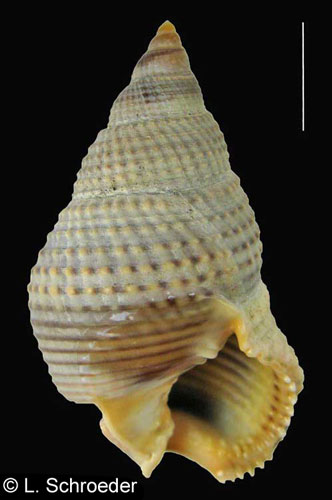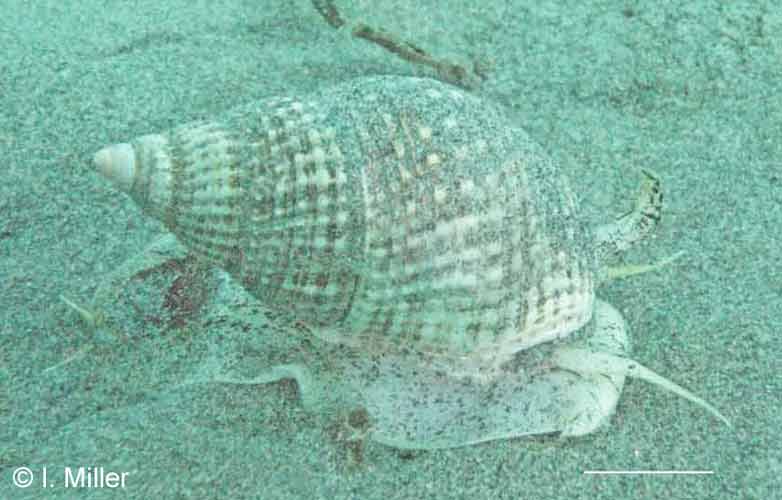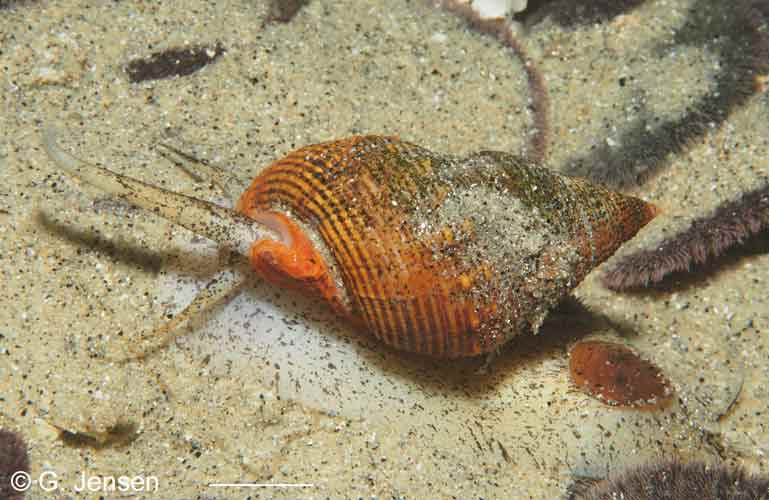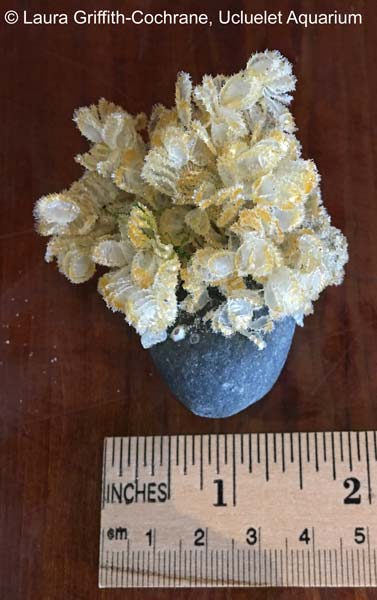Click on photo to enlarge. Scale line in photo equals 1cm unless otherwise specified.
* Species which are commonly encountered on the beach.
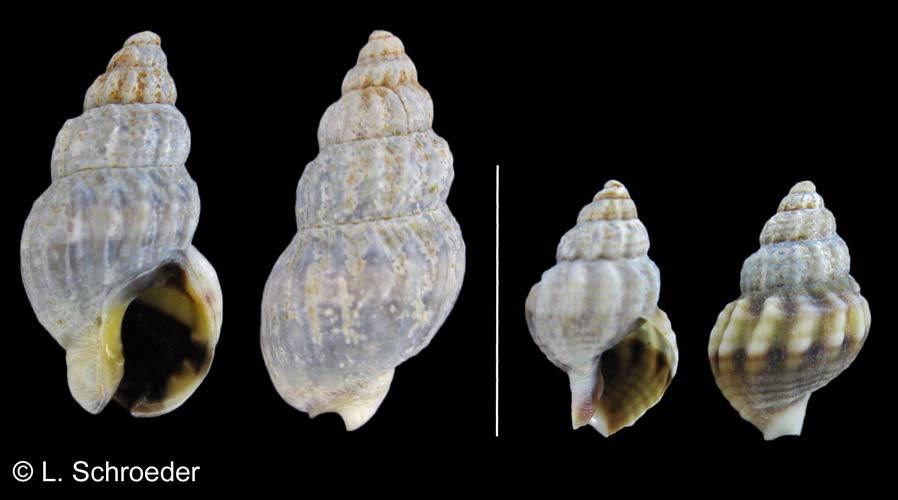
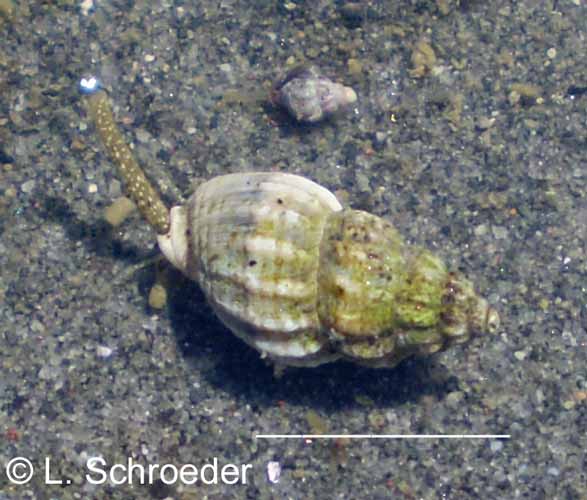
Centennial Beach, Boundary Bay, BC
Centennial Beach, Boundary Bay, BC, intertidal
This
is an introduced species from Japan and is occasionally found in the
areas where it was introduced. It is similar to our native H. mendica. This has slightly angled axial ribs and faint spiral grooves.
There may be light colored stripes on the shell and the aperture is usually yellowish with dark stripes.
(previous name - Hima fratercula, Nassa fraterculus)
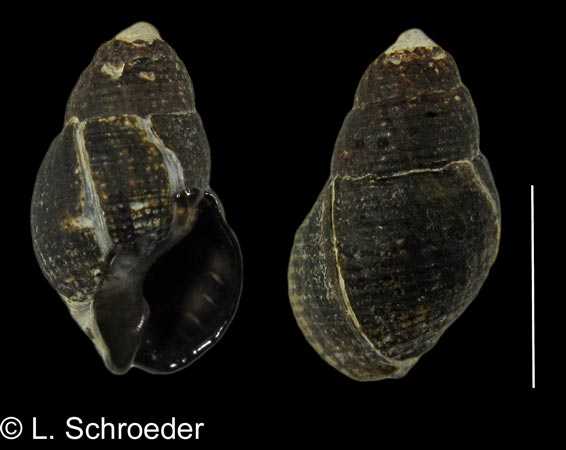
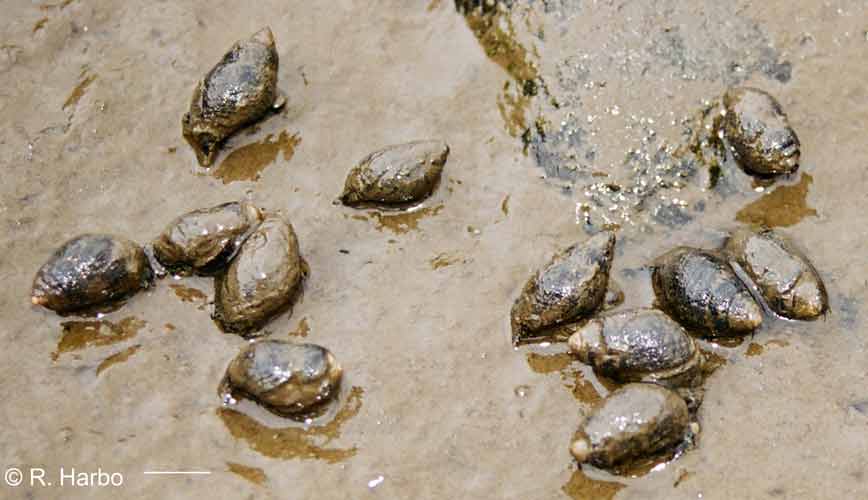
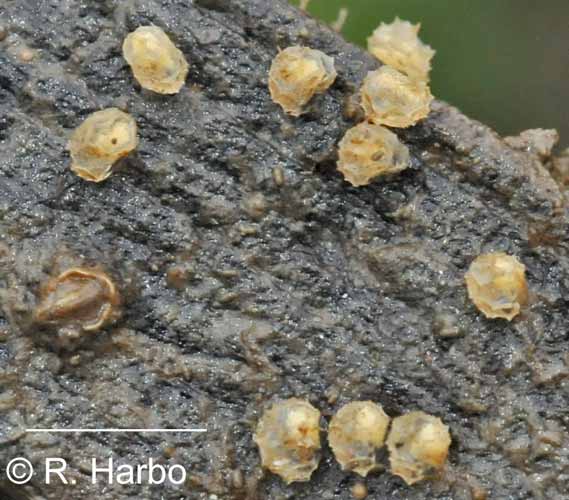
Crescent Beach, Boundary Bay, BC
Crescent Beach, Boundary Bay, BC,
intertidal
Willapa Bay, WA, intertidal
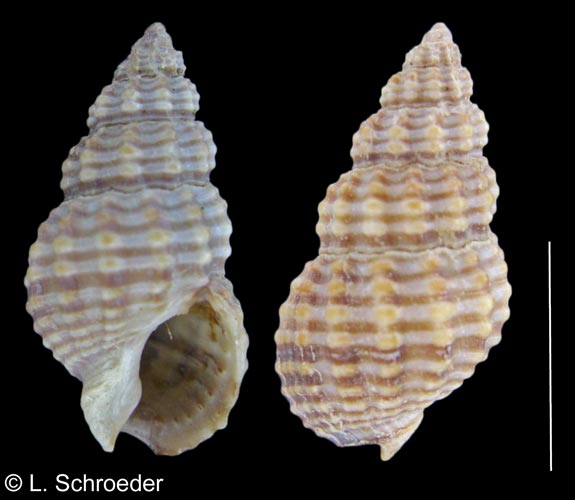
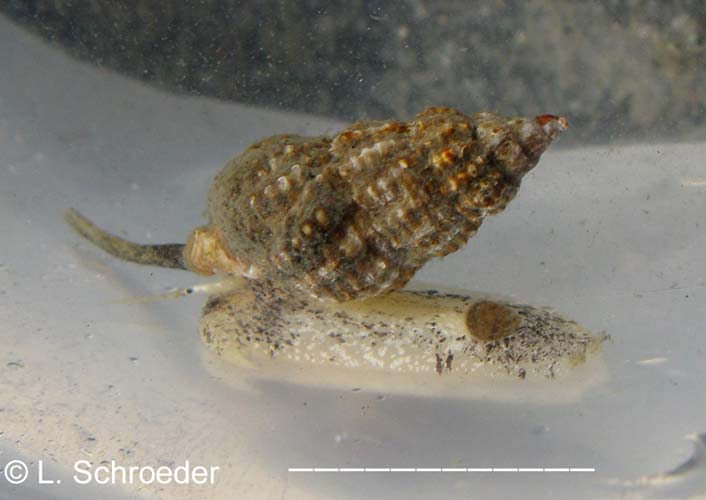
Silverdale, WA
Birch Bay, WA, intertidal
Nassarius mendicus (Gould, 1849)Western Lean Nassa *intertidal to 75m northern Mexico to northern Alaska size to 22mm
This
is commonly found intertidally. The shell is usually gray to
brown but may also be striped with white. It has spiral cords and
straight axial ribs which can give it a somewhat beaded appearance.
These may also be worn down to muted sculpture. The Nassa
snails are scavengers.
(synonyms - Hima mendica, Alectrion mendicus, Nassarius cooperi, Nassarius indisputabilus)
Harfordia harfordii (Stearns, 1871)
Harford's Spindle
subtidal size to 52mm
northern California to BC
This shell has spiral ridges and a thick periostracum. The live animal is bright orange.
Fasciolariidae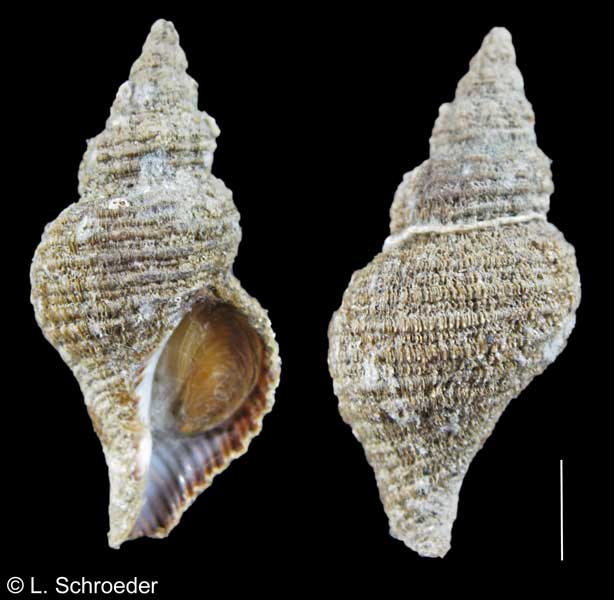 Raft Cove, Vancouver Is., BC
Raft Cove, Vancouver Is., BC
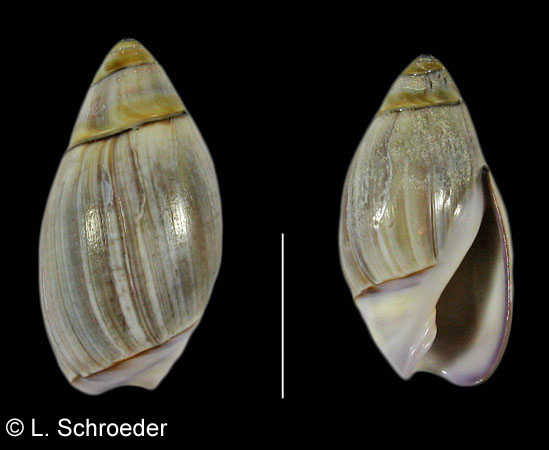
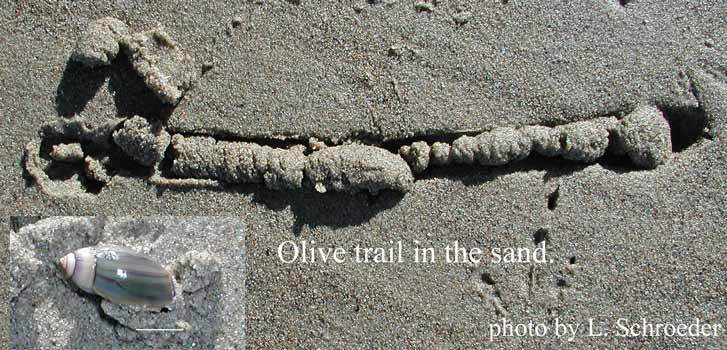
Yachats, OR
Yachats, OR, intertidal
Olividae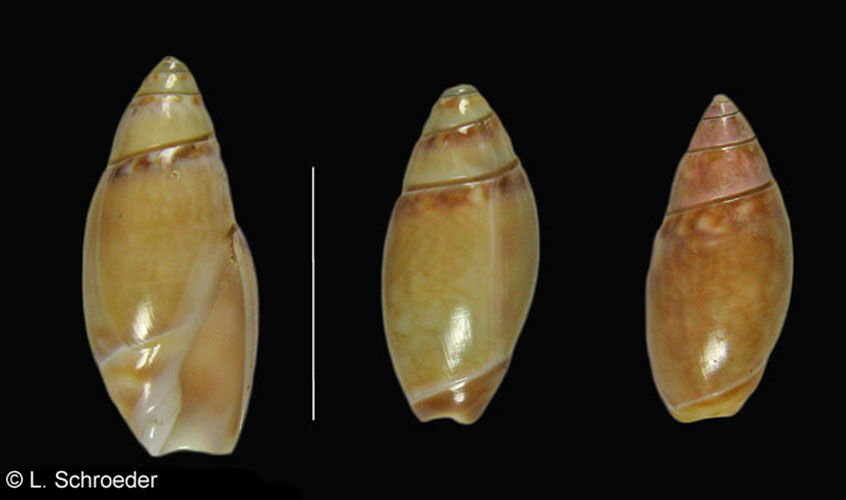
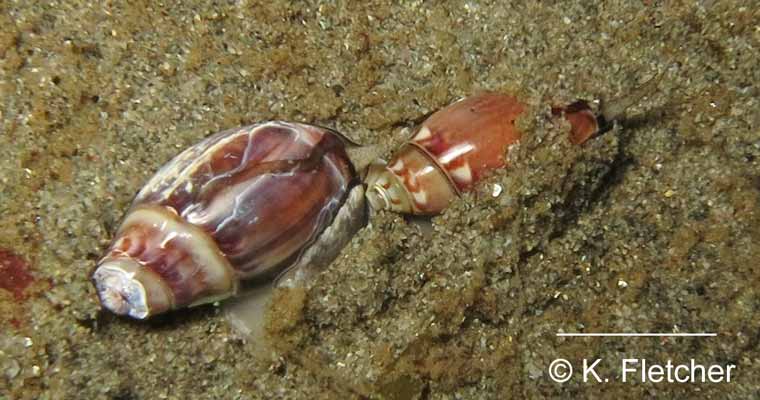
off Neah Bay, WA
West Seattle, WA, subtidal
Callianax baetica (Carpenter, 1864)Baetic Olive
intertidal to 60m northern Mexico to northern Alaska size to 27mm
This
is rarely found intertidally in our area. The shell is variably
colored in shades of brown and is frequently patterned with zig-zag
lines or splotches. The shoulders usually have darker lines and
the shell is glossy. It prefers a muddy to silty habitat and is
often buried in the sediment. A recent paper suggests this should be called
Callianax alectona (Duclos, 1835) but as the paper indicates that C.
alectona may be a complex of species, we will await further study.
(synonyms - Olivella baetica, Olivella diegensis, Olivella mexicana, Olivella porteri, Olivella pedrona)
Gastropods
Family Nassariidae, Fasciolariidae
& Olividae
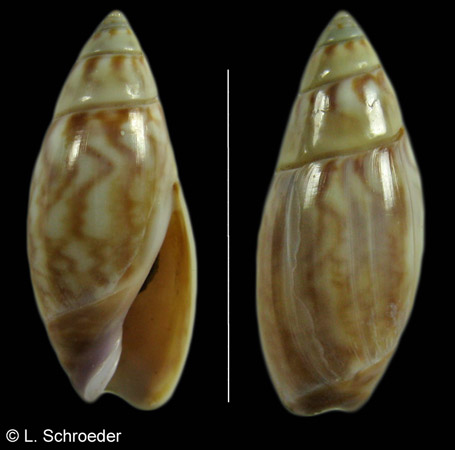 off Neah Bay, WA
off Neah Bay, WA
Callianax strigata (Reeve, 1850)
Zigzag Olive
intertidal to 46m southern California to northern BC size to 15mm
This
is very infrequently found north of Oregon. It is more squat than the Baetic Olive. This one is
also distinguished by its distinct wavy lines on a pale background.
The shell is glossy.
(synonyms - Callianax pycna, Olivella pycna)
This page last revised: 6-16-2024
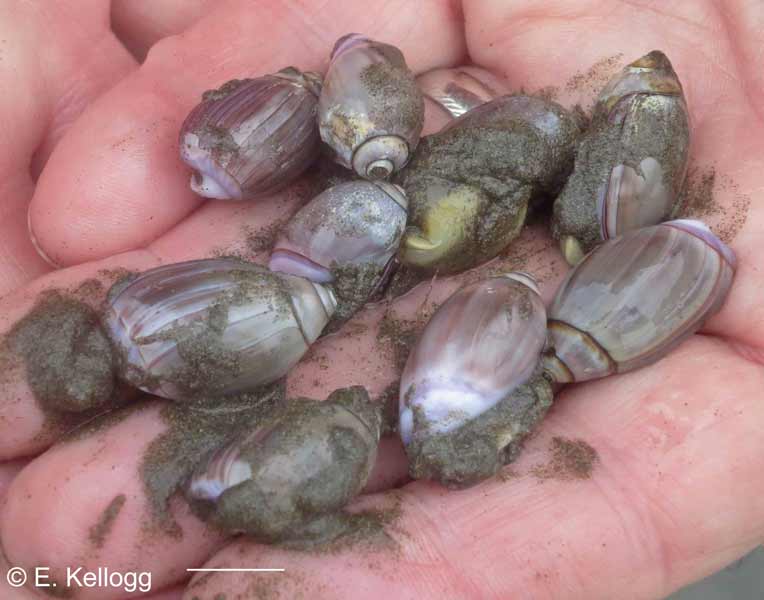 Whiskey Creek Beach, WA
Whiskey Creek Beach, WACallianax biplicata (Sowerby, 1825)
Purple Olive *
intertidal
to 50m northern Mexico to southern
Alaska size to 35mm
This is
commonly found intertidally in some areas, usually open coastal
beaches. The shell may be brown to purplish in color with the
occasional white or yellowish one found. The aperture and bottom
fold are white. The shell width can vary for its height. At
low tide look for raised trails in the sand to find this species.
The coastal native peoples commonly used olives for necklaces and
decoration and it is still highly regarded by the Makah Nation in
Washington.
(synonyms - Olivella biplicata, Olivella angelana, Olivella lapillus, Olivella fucana, Olivella parva)
